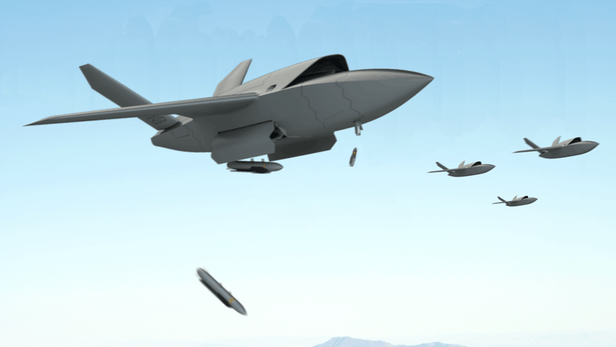
The future of aerial combat is no longer a figment of our imagination but more a reality. Global powerhouses are turning to drone technology even more to further strengthen their military prowess. Kratos drones are just one of many companies doing some groundbreaking work.
Kratos drones were featured at the recent Paris Air Show offering an insight into the future of unmanned aerial combat. With the associated price tag of a manned fighter jet reaching $100 million, UAV’s could be the low-cost option going forward.
Drones currently in service
Drones used by the United States Air Force and Royal Air Force range from small intelligence, surveillance and reconnaissance craft. Some are even light enough to be launched by hand, others are medium-sized armed drones and then larger ‘spy planes’.
Two mid-sized drones used in Afghanistan and Pakistan were the MQ-1 Predator and the MQ-9 Reaper. They are unmanned but not without pilots. Trained personnel on the base steer the craft, analyse images and report back to command.
The MQ-1 Predator was originally designed as an aircraft for gathering intelligence, surveillance, identifying targets and reconnaissance. In 2002 it was equipped with 2 Hellfire missiles with a striking range of 8 km (5 miles). The MQ-9 Reaper is more advanced with 4 Hellfire missiles and laser-guided bombs like the Paveway II and GBU-12. It can cruise up to 370 kph (230 mph) which is much faster than the MQ-1 Predator at 217 kph (135 mph). These are no match though for the Kratos drones.
British forces also use a variety of remotely piloted aircraft such as the Hermes 450 UAV which was deployed in Iraq and Afghanistan. Other smaller UAVs were used to detect roadside bombs ahead of patrols. In 2012, the Hermes 450 was upgraded to the Watchkeeper which, like the Reaper, can carry a weapons payload.
Featured Kratos Drones: XQ-222 Valkyrie
The Kratos XQ-222 Valkyrie and UTAP-22 Mako drones are as close to a fighter jet as you can get. Price range is between $2-3 million which is cheap compared to a full-sized fighter jet. Initially they will both serve as wingmen to manned aircraft and are likely to play a key role in the first unmanned combat swarm.
Kratos XQ-222 Valkyrie will be heavily armed with a maximum speed of around 0.85 Mach or 1 050 kmh. It can reach an altitude of 45 000 ft and covers a considerable distance of 3 425 km (1 850 NM). The first flight of the Valkyrie is scheduled for early 2018.
Featured Kratos Drones: UTAP-22 Mako
The Mako is based on the Kratos-made BQM-167A aerial target and can also be launched from a ship which offers instant aerial power to any naval vessel. Payload versatility is one of the main features so it may just become the ultimate wingman for the Navy.
Slightly smaller than the Valkyrie, the UTAP-22 Mako is faster with a maximum speed of 0.91 Mach (1 125 kmh) and can reach an altitude of 50 000 ft. With higher speed come shorter range but still an impressive 2 600 km’s.
In fact, the Mako has already flown missions with a manned fighter aircraft and it’s currently being modified to integrate sensors. The Mako is a whole new category of UAV’s and these ‘low-cost’ aircraft are likely to be on the front line assisting fighter jets and reducing the aerial threat.
What’s Next?
The humble drone from yesteryear has come a long way and is now a serious force to be reckoned with. Just imagine for a second a swarm of Valkyries and Makos accompanied by a couple of F22 Raptors? This is certainly a glimpse into the future of aerial combat. The technological race for battlefield supremacy is both fascinating and frightening. Soon, every global powerhouse will have the latest and greatest. The question we ask is, “What’s next on the horizon?”
For more information on the Kratos Drones, visit their website or take a look at news from the Paris Air Show 2017.
Some of the industries PRV Engineering work with include Aerospace and Defense, Automotive, Rail, Construction, among others. Please get in touch if you need help with your project or would like more information.
This site uses Akismet to reduce spam. Learn how your comment data is processed.


 Mail:
Mail: 




Leave a Comments